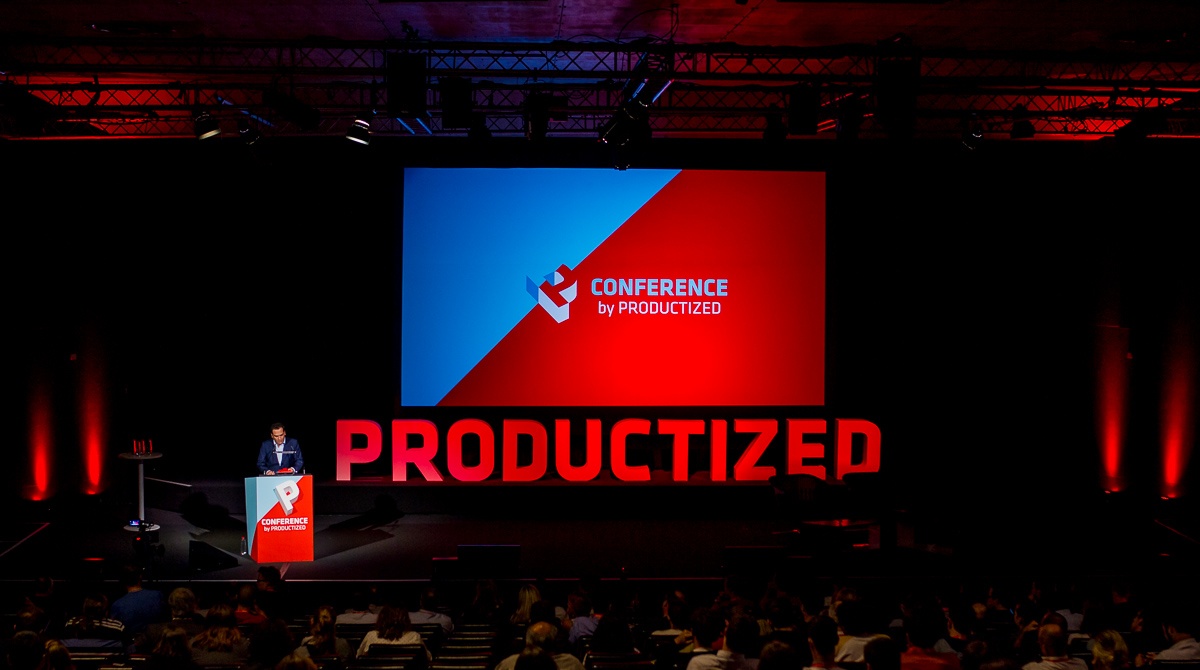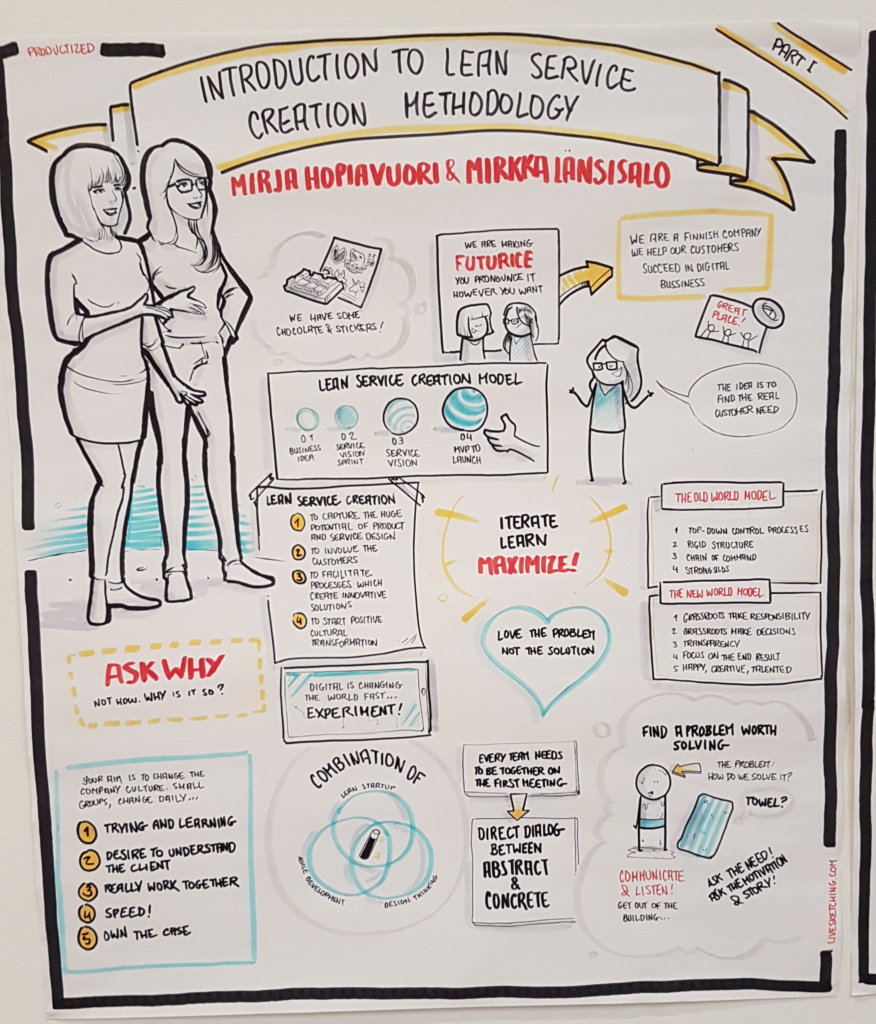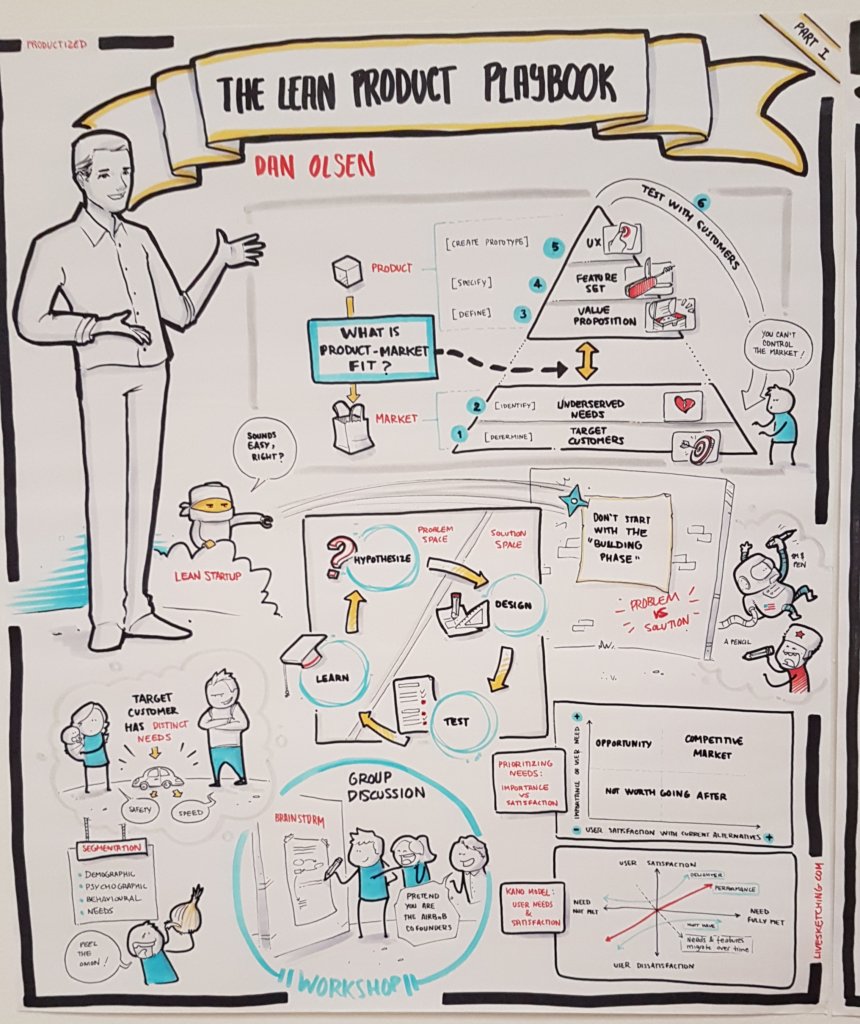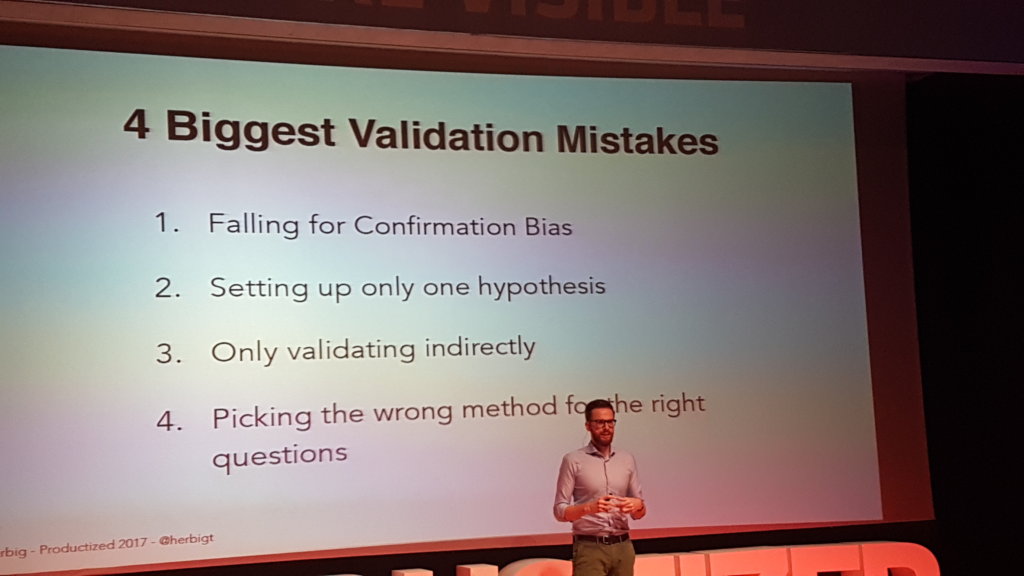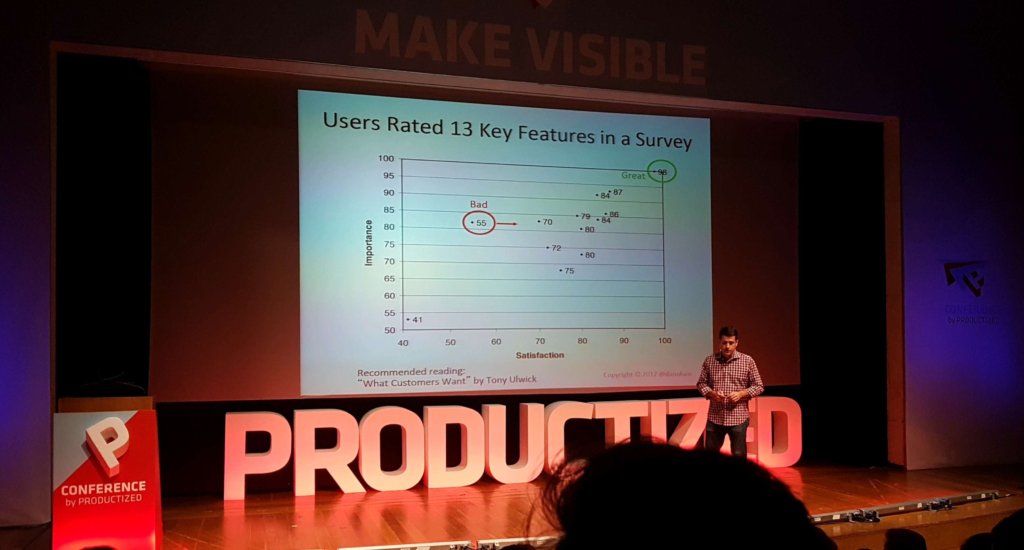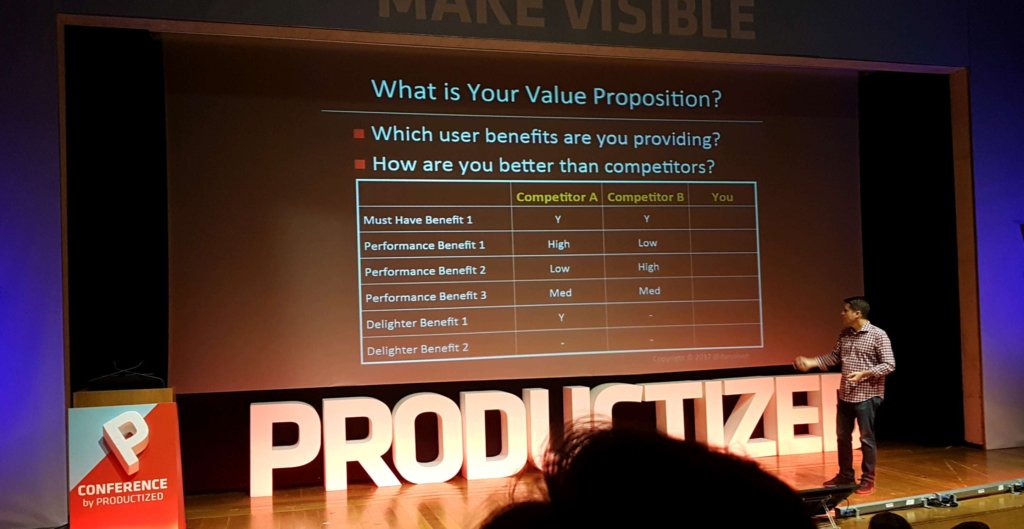The Product Management conference which took place in Lisbon in october 2017, Z Digital Agency was there. Here a quick personal summary with tips and tricks about product management.
1. Design Thinking is the new black
The big winner of the current decade. The customer-centric approach is considered as one of the best way to develop a product made to grab real market shares.
What is Design Thinking?
Here is conference workshop visually summarized by the Live Sketching team.
How to build a product that works?
Building a product can still be a daunting task, because of so many unknown parameters. The latest methodologies are answering this problem by focusing on the Problem Space instead of the Solution Space. It can be counterintuitive for a product manager to focus more on the problem than the solution.
Problem Space Vs Solution Space
By reframing the real market need the company has identified, we open new outlooks.
Example: How to write in space ? The NASA developed a $1M fantastic pen to write in space, while the Soviet took a pencil for $0.5. It is a classic example of narrowing the question down to “How to create a pen for space?” Here the NASA focused on the solution, and mixed it with the problem space.
Step 1: Reframe the question, broaden it.
Step 2: Make sure the problem statement does not contain any subtle solution concept already.
Step 3: Create 3 different questions out of the initial problem statement, use lateral thinking.
Find below an infographics summarizing the lean startup method
2. Lean Startup Method: Forget MVP
This famous Lean Startup Method, written in by Eric Ries, has been challenged during the conference.
The central concept of MVP is faulty for 2 reasons:
- Companies tends to do a release 1.0 instead of an MVP, because they afraid of testing a minimum viable product, thinking it could damage their brand.
- MVPs are too long to test, instead of 2 weeks, it takes 1 year.
Some tricks to design a good MVP:
- Use the concept of SVP (Shoddiest Viable Product). A way to trick your hierarchy in the MVP, by introducing another fast testing level, to be done in 2 weeks.
- Instead of building anything, test the market hypothesis first, with both qualitative and quantitative methods.
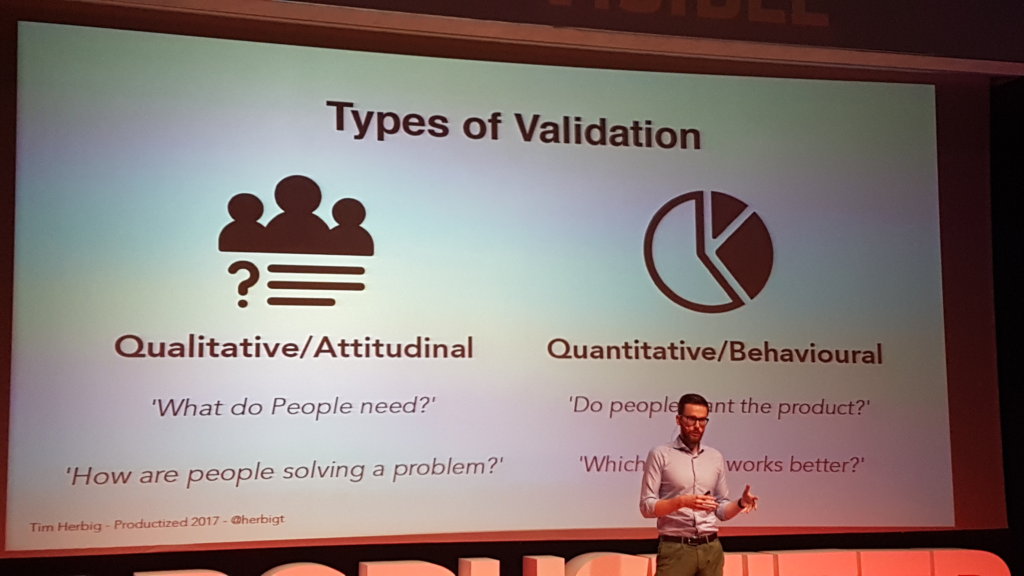
The 2 market validation pillars.
Of course product managers are often making the same mistakes.
The key principle of a fast and efficient product-market fit validation for a software
- Use website mock-ups and drive traffic to it (from a group of customers or from qualified paid traffic)
- Use smoke tests with real email capture
- Use a fake payment button, that leads to a payment form
- Prepare a discount and a kudo for those who actually tried to purchase your product, explaining why it is not available right now.
By comparing the ratio between traffic and “fake” purchase, you’ll get a good idea of the product market fit. The email captured will also be a good base for qualitative validation.
3. Sprint Methodology and team happiness
A great talk from Rian Van der Merwe from Wildbit. The secret of a great company: the team happiness. Not even the customers, the team.
Here is a product management methodology to bring both efficiency and team happiness:
- 6 weeks sprints with a clear scrum methodology where tasks are prioritzed and developers are free to pick their tasks (by priority)
- 2 weeks break: to fix bugs, do some planification or work on personal projects
- Each morning use a chatbot to ask each team member a simple question: Did you work on what you wanted yesterday? If not, why?
The goals of this product management strategy is:
- Use those 6 weeks to also work on company’s long term projects
- Trust each other and empower people
- Bring flexibility 2 weeks per month
- Boost productivity
Here is series of tips about lean startup management, applied to product management, from a talk with Dan Olsen.
Find underperforming solutions in your industry :
In the Productized conference picture below you’ll notice that one of the industry solution is underperforming.
The rule to assess features is Feature Satisfaction / Feature Importance.
The job of a product manager is to understand well enough the market to spot those opportunities and bring the solution to a new level, to capture the value provided to the market.
- High Satisfaction and Low importance: No need to focus on those features
- Low Satisfaction but High Importance: Real market opportunity
Find your product market fit
Focus on your competitive advantages. Build a product with one high performing feature + one WOW effect feature. No more, no less.
Here is an empty canva we use with some of our clients at Z Digital Agency:
——
This was a quick summary of the Productized ’17 Conference in Lisbonne.
Until next time.
